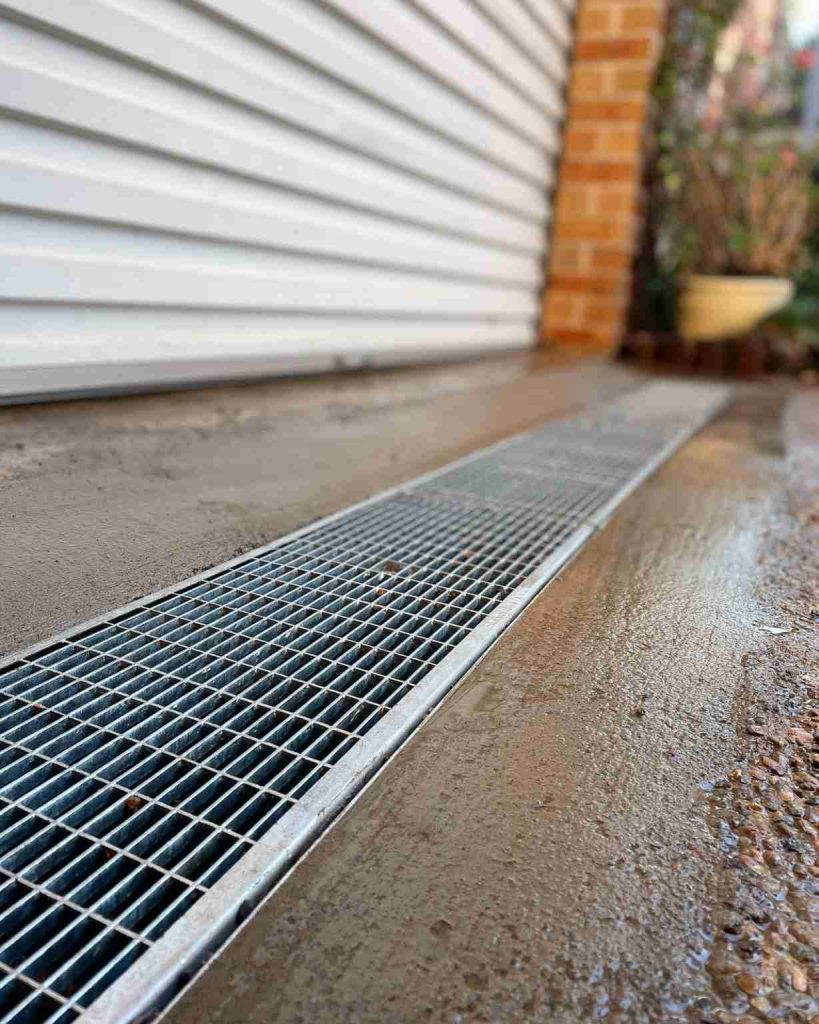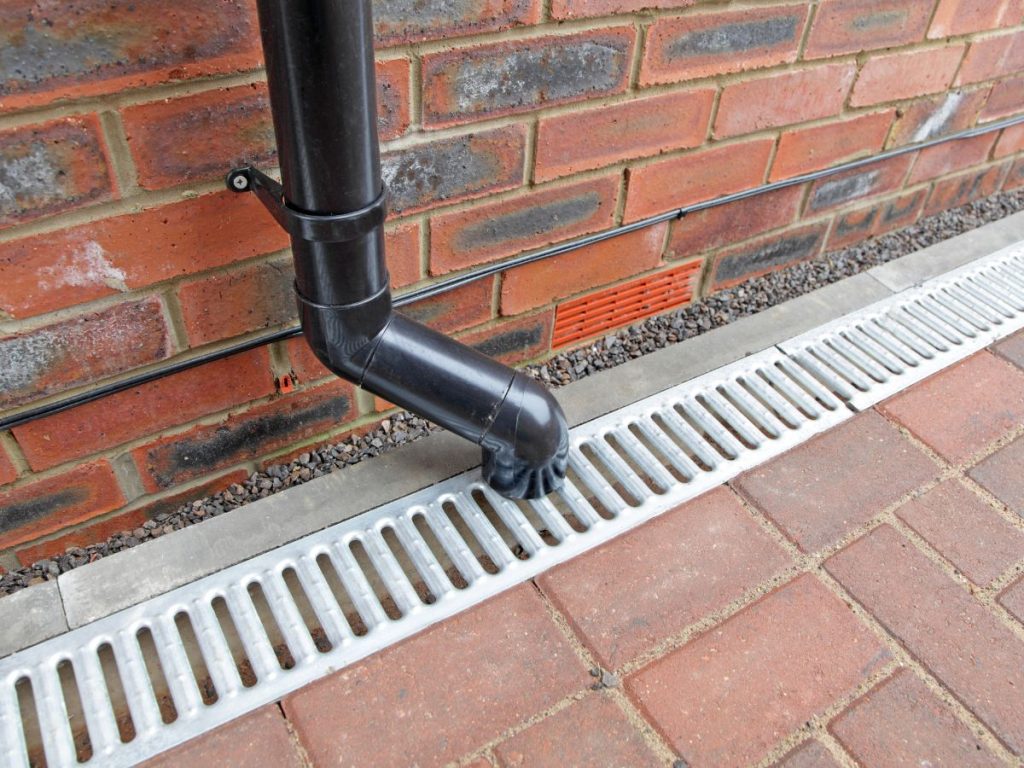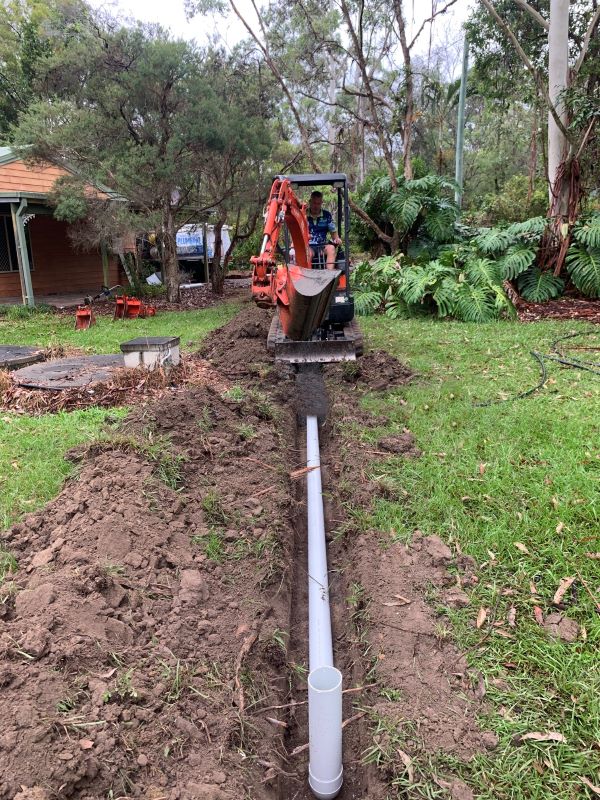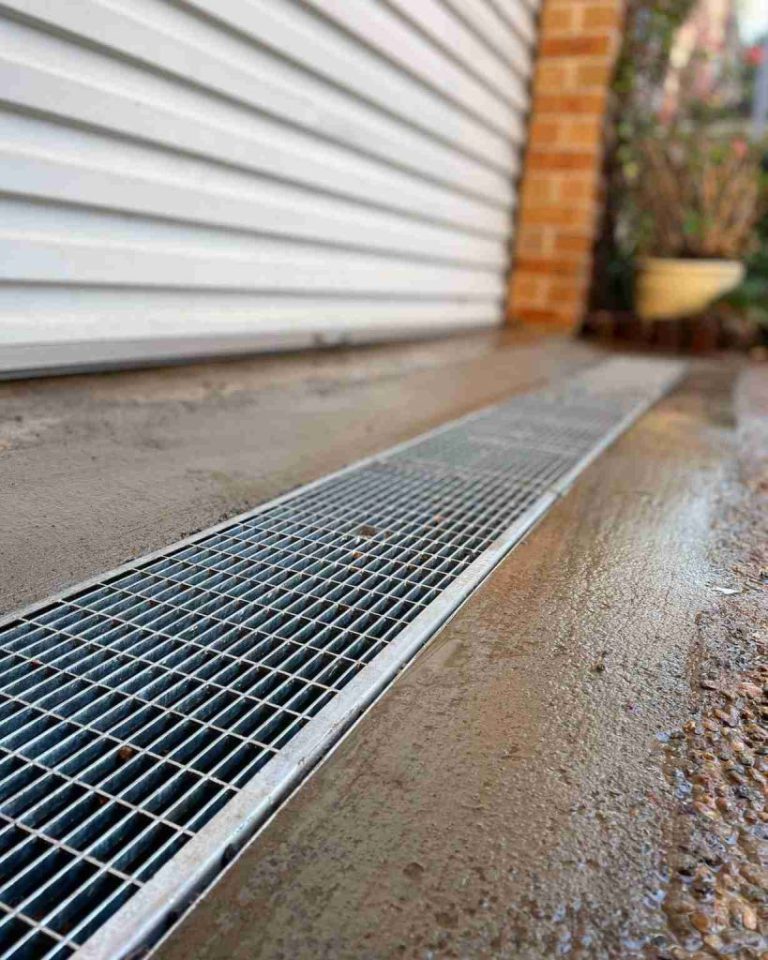The Moreton Bat region and Caboolture area are characterized by their frequent and intense rainfall, which underscores the necessity for effective stormwater management strategies for homeowners. Properties with expansive land areas, especially those that include sloped terrains and driveways, can rapidly become conduits for water runoff. This situation can lead to significant challenges such as water pooling, soil erosion, and potential damage to your property. To mitigate these issues, Creek to Coast Plumbers specializes in delivering comprehensive stormwater solutions that not only protect your home but also ensure efficient water redirection away from vulnerable areas prone to flooding and erosion.

Understanding the Importance of Stormwater Management for Property Protection
Heavy rainfall can result in significant water runoff, particularly on sloped driveways, presenting numerous challenges for homeowners. Some of the most critical issues include:
- Erosion: Uncontrolled water flow down a driveway can lead to serious soil erosion, damaging your landscaping and nearby structures. This not only results in costly repairs but can also negatively affect the overall value of your property.
- Property Damage: Excessive runoff can accumulate near home foundations, leading to flooding in garages and potentially compromising the structural integrity of your home, which may necessitate expensive remediation efforts.
- Hazards: Puddles of standing water on driveways create slippery surfaces, increasing the risk of accidents for both vehicles and pedestrians, making it crucial to implement effective drainage solutions.
In the Caboolture region, where larger properties and acreage are prevalent, stormwater runoff can cover vast areas. This reality highlights the urgent need for effective drainage solutions to protect your land from potential water-related issues that can arise during periods of heavy rain.
Tailored Drainage Solutions for Optimal Stormwater Management on Sloped Properties
Creek to Coast Plumbers provides customized drainage systems that are specifically engineered to manage stormwater effectively on sloped properties and driveways. These tailored solutions are essential for reducing the risks associated with heavy rainfall, ensuring that your property remains protected, functional, and free from water damage. With a focus on meeting the unique needs of each property, our services aim to create a sustainable environment that mitigates water-related issues effectively.

Enhancing Driveway Drainage and Stormwater Control through Trench Drains
Trench drains serve as an effective and versatile solution for managing stormwater on sloped driveways. Their innovative design facilitates the efficient capture and redirection of substantial volumes of water, effectively preventing pooling, runoff, and erosion—issues that are particularly problematic in regions with heavy rainfall.
How Trench Drains Function
A trench drain is essentially a long, narrow channel that is installed flush with the ground, typically covered with a grate. These systems are strategically placed across driveways or areas susceptible to high water flow, collecting surface runoff and directing it into stormwater systems or designated drainage zones. The grated design not only promotes efficient water capture but also maintains the usability of driveways and pathways, making them an ideal choice for residential properties.
Advantages of Installing Trench Drains
Trench drains are particularly adept at addressing the challenges of stormwater management for driveways and hardscaped areas, offering several significant benefits:
- Effective Water Control: Trench drains excel in managing heavy rains, especially on sloped driveways where water flow can quickly escalate into a serious concern.
- Prevention of Soil Erosion: By capturing water at its source, trench drains prevent it from washing over soil, thereby safeguarding your landscaping and the foundations of your property from potential damage.
- Durability and Low Maintenance: Constructed from robust materials such as concrete, metal, or polymer, trench drains are designed to withstand vehicular traffic and require minimal upkeep over time.
- Versatile Applications: These drains are not limited to driveways; they can also be effectively installed around patios, garages, and walkways to manage water flow efficiently throughout the entire property.
Combining Trench Drains with Other Essential Stormwater Management Solutions
For optimal stormwater management, trench drains should be integrated with additional drainage systems tailored to the specific conditions of Caboolture:
- Spoon Drains: These shallow, concrete-lined channels installed along driveway edges are effective in collecting and redirecting water into stormwater systems, efficiently guiding surface runoff away from driveways to prevent pooling and erosion.
- French Drains: Comprising perforated pipes buried under gravel, these systems collect water underground to avoid surface saturation, making them ideal for landscaped areas or property boundaries, thus ensuring the integrity of soil and protection for nearby structures.
- Implementing Erosion Control Measures: Utilizing supplementary erosion control strategies—such as planting vegetation or constructing retaining walls—alongside trench and other drainage systems can help minimize runoff impacts, ensuring that your driveway and surrounding areas remain intact even during heavy rainfall.

Implementing Comprehensive and Effective Drainage Solutions for Properties in Caboolture
By integrating trench drains with additional drainage systems such as spoon and French drains, you can create a comprehensive approach to stormwater management for your property. This holistic strategy not only protects your home from erosion and runoff but also preserves the aesthetic appeal and functionality of your outdoor spaces, contributing to a safe and attractive environment for you and your family.
Work with Creek to Coast Plumbers for Professional Stormwater Management Solutions
Creek to Coast Plumbers are experienced professionals in the installation and maintenance of trench drains and other stormwater management systems tailored to the specific challenges of Caboolture’s climate and terrain. Whether you need to protect a sloping driveway or ensure that your acreage property can efficiently handle heavy rainfall, their team offers durable solutions designed to withstand the test of time and effectively manage stormwater, giving you peace of mind.

Discover the Unique Benefits of Choosing Creek to Coast Plumbers for Your Drainage Solutions
Our dedicated team of Caboolture plumbers possesses extensive experience in addressing the unique challenges associated with managing stormwater on expansive properties. With years of service to the local community, Creek to Coast Plumbing provides customized solutions that meet the demands of heavy rainfall and large acreage. From professional installations to ongoing maintenance, we ensure that your drainage systems operate effectively throughout the year, giving you peace of mind and protecting your valuable investment.
The Article: Driveway Drainage Solutions for Effective Water Management first appeared on https://writebuff.com.




This is such an important topic, especially for those of us living in regions like Moreton Bay that experience torrential rainfall. I find the conversation around stormwater management not only fascinating but incredibly timely and relevant to our current climate challenges. The reality is that as we confront more extreme weather patterns, our homes and communities must adapt to effectively handle these changes.
I completely agree that the topic of stormwater management is incredibly timely, especially for communities like Moreton Bay facing more intense weather patterns. It really gives a sense of urgency to rethink how we design our infrastructure and make our communities more resilient.
It’s great to see your thoughts on stormwater management and its impact on communities like Moreton Bay. You’re right—reassessing how we design our infrastructure is crucial, especially with the unpredictability of weather we’re experiencing.
I really appreciate you bringing up the importance of stormwater management. The issues facing communities like Moreton Bay are definitely reflective of a larger trend we’re seeing globally as climate change redefines our weather patterns. It’s interesting to think about how traditional infrastructure wasn’t designed for the extreme weather events we’re experiencing now.
I completely resonate with your thoughts on stormwater management and how it reflects broader trends. Living in a place like Moreton Bay, you can really see how climate change is altering our daily lives—it’s both alarming and fascinating. Traditional infrastructure being built for a different climate poses a significant challenge; it seems like we’re always in a reactive mode rather than proactively adapting.
It’s interesting to hear your perspective on stormwater management in Moreton Bay. The changes we’re witnessing truly challenge how we think about infrastructure. When you’re living in an area that’s so directly impacted by climate change, it becomes clear how much our existing systems were built with outdated assumptions. We’re facing daily reminders—like the heavier downpours and changing rainfall patterns—of how quickly our environment is shifting.
You make such a great point about how stormwater management really reflects the bigger picture of climate change. It’s eye-opening to realize that many of our cities are just not equipped to handle the rainfall and weather shifts we’re now seeing.
You make a really good point about how traditional infrastructure isn’t keeping pace with our changing climate. It’s almost unsettling to think about how much of our urban planning was built around historical weather patterns that are now outdated. In places like Moreton Bay, it’s evident that creative solutions are needed—like green roofs, permeable pavements, and more natural waterways—that not only manage stormwater more effectively but also enhance community spaces.
You’re spot on about the disconnect between our current infrastructure and the realities of climate change. It really is unsettling to think that much of our urban planning was founded on patterns that no longer apply. The urgency for creative solutions is growing, and Moreton Bay serves as a great example of how we might rethink urban landscapes.
I completely relate to that sense of urgency around rethinking urban landscapes. The idea that our current infrastructure often reflects outdated patterns is something I’ve thought about a lot, especially as climate pressures become more pronounced. Moreton Bay does stand out as a fascinating case study. Their approach to integrating nature into urban planning really illustrates how we can adapt creatively.
I completely agree with the urgency you’re feeling when it comes to rethinking urban landscapes. It’s striking how our cities often feel like relics of past priorities, especially when we factor in the increasingly pressing climate challenges. Moreton Bay is a fascinating case; their efforts to integrate nature aren’t just about aesthetics but also about real resilience.
I share your sentiment about the urgency of rethinking our urban landscapes. It’s indeed striking how many cities seem anchored in past priorities, often at odds with the immediate challenges we face, particularly in terms of climate change. I find it fascinating how areas like Moreton Bay are not just beautifying spaces but incorporating ecological principles that enhance resilience. It really highlights how integrating nature can serve a dual purpose: improving aesthetics while also addressing real-world challenges.
You’ve touched on an important point about the urgency for change in our urban environments. It’s fascinating how outdated infrastructure can limit our adaptability, especially with the climate challenges we face today. Moreton Bay really emphasizes a forward-thinking approach—using nature as a partner in urban development rather than viewing it as something separate to be managed or preserved.
It’s interesting you mention that sense of urgency. I think a lot of us are feeling it, especially when we look around at cities grappling with the changes happening all around us. So many urban areas were built with past needs in mind, and now, with climate change pushing to the forefront, it’s like we’re being offered a chance to rethink how we live and interact with our environment.
You’re spot on about that sense of urgency. It’s almost palpable, isn’t it? Cities have long been designed with specific needs and priorities—often ones that don’t take our current realities into account. You see it in the sprawling layouts, the reliance on cars, and the glaring lack of green spaces.
I know exactly what you mean about that sense of urgency. It’s like we’re at a tipping point where the old ways of city design just don’t cut it anymore. When I walk through neighborhoods that feel like they were plopped down without any thought to community or nature, it strikes me how disconnected we’ve become from our environment.
You’ve captured that feeling perfectly. When we stroll through those neighborhoods, it’s almost like a reminder of what we’re missing—a sense of place that fosters connection and well-being. The disconnection from our surroundings seems to grow each year. We’ve built spaces that enjoy a pulse of activity but lack heart.
I completely agree with your perspective on the urgency of rethinking urban landscapes. The fact that our current infrastructure often reflects outdated patterns is particularly concerning, especially as we face increasing climate pressures. It makes me think about how urban areas often prioritize functionality over sustainability, which can lead to a disconnect between nature and the spaces we inhabit.
You’ve raised some important points that really resonate with me. The balance between functionality and sustainability in urban planning is often challenging, and it seems like it gets harder every day. It’s interesting to think about how our cities, built with past priorities in mind, seem increasingly out of sync with our current needs—especially when you look at the impacts of climate change that are becoming harder to ignore.
You raise an important point about the past approaches to urban planning. It’s quite troubling when you realize how outdated some of those patterns are, especially in the face of climate change, which demands we rethink so much of how we design our cities. Moreton Bay is a fascinating case study because it not only highlights innovative strategies but also showcases the potential pitfalls that can occur when communities hesitate to fully embrace change.
You’ve touched on a crucial point about stormwater management and its connection to broader climate trends. It’s true that many of our cities—Moreton Bay included—are grappling with infrastructure that simply wasn’t built to handle the intensity and unpredictability of modern weather events. As these patterns shift, we’re forced to reconsider not just how we build, but how we think about community resilience and environmental stewardship.
You’ve really hit on something important with the connection between stormwater management and larger climate trends. It’s fascinating (and a bit concerning) to see how much cities like Moreton Bay have to adapt to the increasing intensity of weather events. When I think about the infrastructure development that took place decades ago, it’s clear that those systems were designed with a much calmer climate in mind.
It’s interesting how stormwater management ties directly into personal choices at home; I recently came across some tips that could really help with water pressure issues while also considering our impact on the environment.
‘Water Pressure Solutions: Expert Tips for Your Home’
https://www.brissyelectricians.com.au/water-pressure-solutions-expert-tips-for-your-home/.
You’ve nailed it with the connection between stormwater and climate chaos. It’s a bit of a head-scratcher when you think about how the infrastructure folks back in the day were tackling problems that seem almost quaint now. We’re out here dealing with intense storms that make your average rain feel like a light drizzle—seriously, I half-expect to see ships sailing down my street some days.
You’ve nailed it—modern infrastructure often feels like it’s caught in a game of catch-up with Mother Nature, who’s clearly been binge-watching disaster documentaries. Moreton Bay and similar areas can feel like they’re in an ongoing soap opera: each episode featuring a plot twist of extreme rains or unexpected droughts. It’s almost like we’ve got a reality show on our hands, and we’re all tuning in for the next big weather reveal!
You’ve really pinpointed something that resonates with so many of us living in Moreton Bay and other urban areas facing similar challenges. The truth is, when our cities were designed, they weren’t prepared for the scale and frequency of rain events we see today. It’s like trying to use a landline phone for video calls – the technology just doesn’t match the demands we have now.
You’ve hit the nail on the head with stormwater management and our cities’ woefully outdated infrastructure. It’s as if our urban planners thought the weather would only change if they were having an argument with their spouses. When the forecast starts to resemble a soap opera plot twist, it’s time for us to rethink how we build and what we’re designing for.
You’re spot on about the urgency of stormwater management in places like Moreton Bay, especially as we see weather patterns becoming more unpredictable. It’s interesting to think about how much our current infrastructure is designed for yesterday’s climate, and that simply won’t hold up against the challenges we’re facing now, let alone what may come in the future.
You’ve hit the nail on the head! It’s striking how our stormwater infrastructure often seems stuck in a time warp, relying on old models that can’t keep pace with today’s climate reality. Moreton Bay is a great example; the unpredictability of weather challenges everything from urban planning to community safety.
You really touched on something important there. The way our stormwater infrastructure is lagging behind the realities of climate change is definitely concerning. Moreton Bay illustrates the complexity of this issue; the unpredictability of weather patterns not only complicates urban planning but also has significant implications for community resilience and public health.
Speaking of outdated systems, it’s interesting to consider how sewer line issues can also reflect the pressing need for modern solutions, as highlighted in a recent piece I came across.
‘Sewer Line Repair Signs: Expert Tips from Melbourne’
https://www.brissyelectricians.com.au/sewer-line-repair-signs-expert-tips-from-melbourne/.
You raise an important point about the mismatch between our aging infrastructure and the evolving climate challenges. It’s true that many systems were built with a different set of climate expectations, and now we’re seeing the cracks in that foundation. The unpredictability of weather patterns isn’t just a nuisance—it’s a real crisis that impacts our communities, ecosystems, and economy.
You’ve really captured the essence of the issue. The aging infrastructure really does feel like a relic from a time when we didn’t fully grasp how dynamic our climate could become. I often think about how much our built environment shapes daily life, from transportation to housing, and how those systems are buckling under the weight of unexpected weather.
You touched on a crucial issue regarding our aging infrastructure, and in light of that, I recently found an insightful piece on how to ensure our air conditioning systems are prepared for the changing climate this summer.
‘Air Conditioner Readiness for a Cool Summer!’
https://www.brissyelectricians.com.au/air-conditioner-readiness-for-a-cool-summer/.
You make a really important point about how our built environment impacts daily life, especially with the unpredictability of weather patterns. It’s fascinating—and a bit alarming—how our infrastructure, designed for another era, struggles to keep pace with the realities of our changing climate. When we think about transportation systems or housing, it becomes apparent just how intertwined they are with the shifting climate. Heavy rainfall or unexpected heat waves can leave them feeling inadequate.
You bring up such an important point about how our built environment shapes our daily lives. As we face increasingly unpredictable weather patterns, it’s hard not to notice how many of our systems seem out of step with the new realities we’re living in. The aging infrastructure is like a stubborn stubborn old friend refusing to adapt, while the world around us is constantly changing.
You’ve really hit the nail on the head with your thoughts on aging infrastructure—it’s like trying to run a marathon in a pair of flip-flops. Makes you wonder how we got to this point, right? It seems we built everything to last for two centuries instead of adapting to the whims of a climate that’s suddenly throwing tantrums more frequently than a toddler denied dessert.
You’ve nailed an important point about how our infrastructure really was built for a different time. It’s wild to think that while we were designing for durability, we didn’t fully consider how quickly our world would change. As climate events become more intense and unpredictable, those sturdy structures are becoming… well, less sturdy.
You bring up a really important point about how our built environment shapes everyday life. It’s wild to think about how much our infrastructure, especially things like air conditioning systems, needs to catch up with the reality of a rapidly changing climate. A lot of people overlook how crucial these systems are until they start breaking down during a heatwave.
You raise an excellent point about how our infrastructure often lag behind the changes in our weather patterns. It’s true; what worked in the past no longer suffices in the face of increasingly unpredictable storms and rainfall. In Moreton Bay, and many other regions, our systems were designed with a very different climate in mind.
You’re so right about the urgency of stormwater management, especially with the unpredictable weather patterns we’ve been seeing in Moreton Bay. It’s interesting to think about how infrastructure design can directly impact a community’s resilience. In my experience, it feels like we often prioritize short-term fixes rather than long-term, sustainable solutions.
You bring up such a crucial point about the balance between immediate solutions and sustainable design in stormwater management. It really does feel like we’re stuck in this cycle of reacting to issues instead of proactively addressing them. The unpredictable weather in Moreton Bay is a clear reminder that we need to rethink our infrastructure to ensure it’s resilient to the challenges posed by climate change.
You’ve touched on something really important regarding the ongoing challenge of stormwater management. This cycle of reacting instead of being proactive is frustrating, especially when we have the knowledge and tools to make lasting changes.
You make a really insightful point about the need to shift from reactive to proactive strategies in stormwater management. It’s definitely a bit disheartening to see how often we patch up issues after disasters instead of planning for resilience from the outset.
You’ve touched on a crucial issue that many communities grapple with. The tendency to delay proactive measures until a disaster strikes often leads to a cycle of response rather than prevention. It’s a bit like waiting until a leak becomes a flood before thinking about fixing the roof.
You hit on a crucial concern. The gap between recognizing the need for planning ahead and actually implementing those strategies is wide. It’s striking how often we deal with the aftermath rather than preventing it in the first place. Planners and policymakers often operate on tight budgets and timelines, leading to a focus on immediate fixes rather than long-term solutions.
It’s great to see your thoughts on the shift from reactive to proactive strategies in stormwater management. You’re targeting something essential here. The tendency to respond to events only after they’ve occurred can create a frustrating cycle, and you’re right; it can feel disheartening when we witness communities struggling even after past disasters.
You’ve really captured the essence of the dilemma we face with stormwater management and urban infrastructure. The cycle of reacting rather than being proactive often leads us down a challenging path. In areas like Moreton Bay, where weather patterns can shift so dramatically, it’s particularly frustrating to see the same old strategies being deployed with little thought for long-term sustainability.
You bring up a crucial point about the difference between short-term fixes and sustainable solutions. It’s tempting for decision-makers to opt for quick patches, especially when there’s pressure to show immediate results, but those choices can backfire when weather patterns turn volatile.
You’ve hit on something crucial with how infrastructure design shapes community resilience. It’s frustrating when short-term solutions take the spotlight over sustainable ones. In Moreton Bay, with our weather becoming less predictable, communities really need to focus on designs that can adapt and thrive in the face of these challenges.
You make a really important point about the role of infrastructure design in community resilience. It’s definitely concerning how often we see short-term fixes prioritized over sustainable solutions, especially in areas like Moreton Bay where weather patterns are becoming increasingly unpredictable.
You’ve really hit on a crucial issue with the contrast between short-term fixes and sustainable solutions. It feels like we’re often caught up in addressing immediate problems without considering the long-term impacts, especially in regions like Moreton Bay where climate resilience is becoming increasingly important.
You’ve really raised a significant point about the balance between short-term fixes and sustainable solutions. It often feels like we are on a treadmill, running to keep up with immediate challenges while neglecting the broader consequences of our choices. In places like Moreton Bay, the urgency of climate resilience is becoming more pronounced, particularly given the area’s unique ecosystems and the pressures from development.
You raise a great point about the balance between urgent fixes and long-term solutions. There’s a lot of pressure to patch things up quickly, especially when bad weather hits, but those short-term fixes often leave us vulnerable down the line. It’s like putting a band-aid on a deeper wound that really needs attention.
It’s refreshing to hear your thoughts on stormwater management, especially considering the unique challenges that areas like Moreton Bay face. Our climate reality is shifting, and with it comes the need for innovative thinking about our infrastructure.
You’ve hit the nail on the head with the whole stormwater management situation—it’s like dealing with a cranky toddler who suddenly decides it’s time to throw a tantrum with a fire hose. In Moreton Bay, where torrential rainfall seems to be the local sport, it’s a game we need to play well.
It’s great to see your enthusiasm for such a critical subject. Living in an area like Moreton Bay, which has witnessed significant rainfall events, underscores just how pressing this issue is for our communities. The impacts of climate change are incredibly real for all of us, and adapting our approach to stormwater management can be a key part of that response.
I couldn’t agree more with your perspective on this critical subject. Living in Moreton Bay really does bring the impacts of climate change right to our doorstep. It’s eye-opening to see how much we need to rethink things like stormwater management, especially with the rising intensity and frequency of rainfall events.
You’re spot on about the urgency of addressing stormwater management. In Moreton Bay, the local infrastructure isn’t just outdated; it’s almost designed for a climate that no longer exists. As rainfall patterns shift, we see that traditional systems struggle to cope, leading to flooding and pollution that threaten both our waterways and communities.
You’re spot on about how living in Moreton Bay puts the impacts of climate change right in our faces. It’s impossible to ignore the changes happening around us, especially as we’re hit with those heavier rainfalls more and more often. It makes you wonder how we’ve been managing stormwater all this time, doesn’t it?
I completely agree with you—stormwater management is essential, especially in regions like Moreton Bay where we’re witnessing some extreme weather. It’s interesting how often we overlook the subtle impacts of heavy rainfall on our daily lives until we’re faced with heavy flooding or property damage. I’ve been looking into some of the innovative methods communities are using to tackle stormwater issues, like permeable pavements and rain gardens.
I completely resonate with your observations about stormwater management, particularly in regions like Moreton Bay facing such intense rainfall. The increasing frequency and severity of extreme weather patterns are indeed pressing issues that require innovative solutions. It’s clear that our communities have to evolve alongside these challenges.
Your thoughts reflect a reality many of us are grappling with, especially in areas like Moreton Bay where the landscape can change so dramatically during a storm. It’s interesting to think about how our communities are not just facing challenges but also unique opportunities to rethink how we manage our environment.
I really appreciate this deep dive into stormwater management in the Moreton Bat region and Caboolture area. The challenges you detailed resonate with many homeowners, especially those of us who have properties with sloped land. I’ve personally experienced the frustration of dealing with water pooling around my driveway after heavy rains, and it’s quite alarming to see how quickly erosion can take hold.